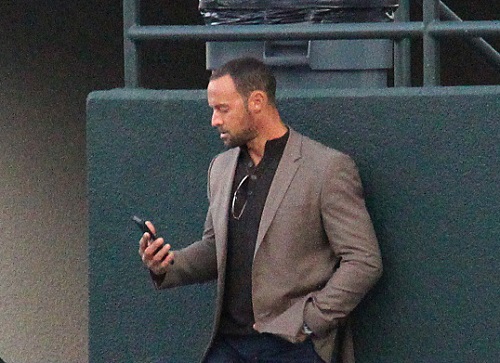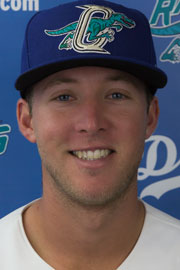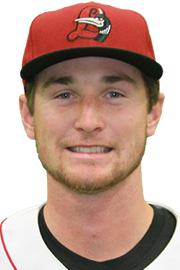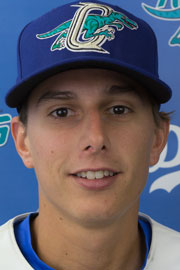Major league baseball teams are constantly trying to find ways to get a leg up on the opposition. A variety of techniques have been used to acquire and develop the “best of the best” young players coming out of high school and college. Improved scouting, especially on the international scene, has taken on a more significant role as MLB team payrolls have ballooned almost out of control. Sabermetrics and analytics have become a panacea designed to use players in roles most aligned with their skills. Advanced training methods are employed, still with somewhat limited success, to try to avoid the inevitable injuries, especially to pitchers. Off-season training regiments and winter ball are used to turn a young player’s baseball life into a year-round experience.
The Dodgers have always been on the leading edge in innovation in the world of baseball. Dodgers farm director Gabe Kapler has mandated that teams within the Dodgers sphere of influence provide organic food for the often still growing players in the system. Kapler subscribes to the theory that we are what we eat.

If you attend Dodgers minor league games there’s a pretty good chance that at some point you will run into Dodgers director of player development Gabe Kapler.
(Photo credit – Ron Cervenka)
In the spring of 2015 Kapler set out on another adventure not knowing for sure where it would lead. He enlisted the help and support of Driveline, a baseball-performance training system developed by Kyle Boddy. Kapler simply turned over a group of young pitchers to Boddy setting them on a ten-week journey like none that he nor they had ever previously experienced. While their teammates moved on to begin the regular season following spring training this designated group of pitchers remained behind not participating in game situations for over two months.
Right-handers Corey Copping and David Reid-Foley were two of the first to become “guinea pigs”, as Copping called them when they became Driveline students following spring training in 2016. Not enamored with being detained at Camelback Ranch and not knowing what to expect the two put on game face and did exactly as they were instructed to do.

Corey Copping
Kapler and Dodgers pitching coordinator Rick Knapp did explain what was about to happen but one expects the players did not fully understand until the work began. Two representatives from Driveline Baseball, a pitching performance facility in suburban Seattle, would lead a 10-week program designed to increase velocity and hone mechanics. Once the 10 weeks were up, everyone would be allowed to pitch again. They indicated that the results would speak for themselves so it seems Kapler and Knapp had confidence in the program going in.
Copping was selected by the Dodgers in the 31st round of the 2015 First-Year Player Draft out of the University of Oklahoma. Reid-Foley was signed by the Dodgers as an undrafted free agent catcher out of Mercer University in 2013. The following year he was converted to pitching.
Throwing weighted balls and doing lifts was a bit confounding to the youngsters as even after a few weeks their arms were throbbing at the end of the day. Neither Reid-Foley nor Copping saw any rewards for their hard work until the final week of extended spring training, when they were finally free to pitch in a game.

David Reid Foley
Copping said his fastball was clocked between 86 and 88 mph at the end of spring training. After 10 weeks of Driveline, he was regularly touching 92 to 94 mph. Reid-Foley’s velocity went from 88-91 mph at the end of spring training to 90-94 mph.
Both Copping and Reid-Foley were assigned to Rancho Cucamonga in July and both players felt better about their careers at the end of the Driveline experience than they did at the beginning of spring training. In addition to his increased velocity, Copping suggested the 10-week Driveline program had afforded him another real benefit.
“After an outing I did all my recovery stuff through Driveline,” Copping said, “and it felt like I didn’t pitch that night.”
Copping is presently participating in the Arizona Fall League with the Glendale Desert Dogs following a very successful season with the Rancho Cucamonga Quakes in which he posted a 3. 72 ERA along with 22 strikeouts and six walks in 19.1 innings. With the Desert Dogs, he is sporting a 2.84 ERA in 6.1 innings along with eight strikeouts.
Right-hander Andrew Istler was a third member of the Dodgers minor league pitching staff that participated in the Driveline program. He was drafted by the Dodgers in the 23rd round of the 2015 June Draft out of Duke University. Istler stands 5′ -11″ and weighs just 175 pounds so as pitchers go he might he described as diminutive. That is, Pedro Martinez diminutive. Yet in watching his games on MiLB.TV and listening on radio it was evident his arm was not diminutive.
On the season, after a strong start with the Ogden Raptors, Istler recorded a 0.96 ERA with the Great Lakes Loons over 11 appearances while striking out 21 in 18.2 innings and walking but two. In the playoffs, he pitched seven scoreless innings while striking out six and issuing no walks.
In an interview with Hugh Bernreuter of MLive Andrew Istler spoke to his success in the Driveline program although he had initial reservations about it while being held back for extended spring training.
“I wish I had done this earlier in my career,” Istler said. “It’s a career-changer. At first, I wasn’t sure. I figured the Dodgers wanted me to try it, so I’d try it out and see what happens.”

Andrew Istler
Istler explained the routine which truthfully doesn’t sound like a whole lot of fun, especially daily over an extended period of time. “They keep players back to play extended spring training, but for us, this was our extended spring training,” Istler said. “It was pretty intense. We did a lot of lifting, a lot of throwing, a lot of running. We weren’t playing, but we were throwing a progression of weighted balls every day, trying to throw harder than the others.”
As with Copping and Reid-Foley there were tangible results as a reward for his sentence to hard labor.
“It built up my arm, built up my strength,” Istler said. “Before the program, my fastball was 89 (mph) to 91. Now it’s 92 to 95. That makes a big difference in getting batters out, furthering my career, moving up.”
Bobby Cuellar, the pitching coach with the Loons, noticed the difference with Istler: “At the end of spring training, the Dodgers identified a group of pitchers who needed to get stronger,” Cuellar said. “They put them through a strength program. Andrew was one of those players.
“Andrew’s not a big pitcher, but he needed to get stronger. But it didn’t make him a good pitcher. Andrew was always a good pitcher. Now he’s stronger.”
As for Andrew Istler he would do it all over again and in fact will do so after taking some time off following his season before returning to the Driveline program to get ready for the 2017 season.
“I probably won’t go through it as intensely as we did the first time … that was crazy intense,” Istler said. “But I’ll keep doing it in some fashion. I’ve seen the results.
“It’s a career-changer.”




 October 31st, 2016 at 6:00 am
October 31st, 2016 at 6:00 am  by Harold Uhlman
by Harold Uhlman 
 Posted in
Posted in 

Very interesting! Good stuff!
Thanks for the peek into the “Dodger Baseball Player Factory”. I suspected stuff like this was happening after watching FAZ bring multiple DFA’d players from other organizations to Glendale for a look see. Also thought staying behind for an ” extended spring training” wasn’t any picnic. I wish they could patent the procedure to keep it away from the competition.
If I understand it correctly the Dodgers are one of four MLB teams using Driveline. Driveline, of course , is a business and their business is not only to be successful but profitable so no patent for the Dodgers.
Vanderbilt uses the program so Walker Buehler will have used it as part of his TJ surgery rehab. I also understand Scott Kazmir used it in his comeback and increased velocity.
Kyle Boddy hopes with improved mechanics and arm strength that there may be a reprieve from TJ surgery and other arm issues but he does not advertise it as an injury preventive program.
Way off topic, but I don’t know where else to ask this:
What ever happened to the Jackie Robinson statue?
I expect the one at Dodger Stadium is still in the works. No date for its completion in 2016 was given as far as i know.
There’s also a Robinson statue in Montreal, where he played in the minors in 1946 before joining the Dodgers. A replica stands in Daytona Beach, Fla., at Jackie Robinson Ballpark, where he played in the first integrated spring training game.
Update: We’ve found at least two more Jackie Robinson statues: One in Pasadena, his hometown. And one at the UCLA campus, where he was a multi-sport dynamo (not to mention a student).
Update II: And still more. There’s another in Stamford, Conn., where Robinson lived the final years of his life, and one in Jersey City, N.J., where he played his first professional game. And, of course, there’s one in Cooperstown, N.Y. at baseball’s Hall of Fame.
The Dodgers’ statue of Robinson will be (at least) the ninth.
Maybe I’m mistaken, but I seem to remember the one at Dodger Stadium was planned to be completed sometime during the recently completed season.
Frankly, I’d forgotten all about it until this morning, when I saw the same question posted on the mlb/Dodgers site. I just figured answers here seem to more often be from those who actually know.
Thank you.
Back on topic:
This Driveline stuff looks quite interesting. The thing that really got my attention, as I was thinking about a maintenance program by time I got to it, was:
“After an outing I did all my recovery stuff through Driveline,” Copping said, “and it felt like I didn’t pitch that night.”
I’m wondering if this stuff can lead to reduced rest required between starts, maybe a return to the 4 man rotation, or more consecutive days that a RP is available. That’s speculation at this time, of course, and needs to be approached cautiously (remember Mike Marshall).
Please keep us updated on how this program is working.
Maybe Ron can talk with Corey Copping this week when he is in Phoenix to take in play in the AFL.
I am a little ambivalent on this one. I do believe in innovation, but I do not believe that there is a tool that can universally improve a pitcher. The results seem to indicate that Copping, Foley, and Istler did improve velocity with the program, but couldn’t an accomplished Pitching Instructor and Physical Trainer get comparable results? Pitchers have different pitching motions and different arm slots, and not every training program is going to help with that. Improved body angle and leg drive can also improve velocity. I have read that Nolan Ryan drove his fist through a barrel of rice during the off-season as part of his training regimen. His training program worked for Nolan well into his 40’s, but probably would not work for others.
Every scout should be able to observe a pitcher, record their velocity, and determine if there is a pitching adjustment that can improve that velocity. IMO, minor league instructors are the most important tools, and where $$$ should be allocated. I draw a distinction between instructors and coaches. If the player believes in Drive Line (as Istler indicates he does), that should be included as an off-season tool. Istler improved his velocity, but he knows how to pitch. Pedro Baez can throw a ball through a brick wall, but is not really a pitcher. I think Drive Line can improve the strength (throwing), but it is the instructors who can develop pitchers.
I don’t think this is an all or nothing plan. I think it is just one more tool in the tool box that is still being refined.
“I think Drive Line can improve the strength (throwing), but it is the instructors who can develop pitchers.” Totally agree. Driveline has a specific purpose that may be able to be used universally but being quite new the jury is still out on it. On its own it seems to help pitchers throw harder and recover more easily but refining pitching is still up to the instructors. Both require hard work by the pitchers.
It is intended to be an off-season program and Andrew Istler plans to follow the program.
Clearly the “recovery stuff” mentioned by Corey Copping is not the full plan described by Harold. That led to my thought that this is not a “one size fits all” program, but can be tailored to fit specific needs.
I just tend to think back to the days when pitchers would take 3 days off, then throw another complete game. I think of Sandy doing that with an arthritic elbow, even clinching the ’65 WS with a shutout on 2 days rest.
I would doubt that the full 10 week program would be good for older pitchers, but maybe something could be tailored for them.
Still, as Harold said, it’d just be one more tool in the tool box.
[…] minor league games in 2016, giving them something of an extended spring training at their complex to see if they could improve throwing velocity. Dodgers pitchers Corey Copping and Andrew Istler learned […]
[…] minor league games in 2016, giving them something of an extended spring training at their complex to see if they could improve throwing velocity. Dodgers pitchers Corey Copping and Andrew Istler learned […]